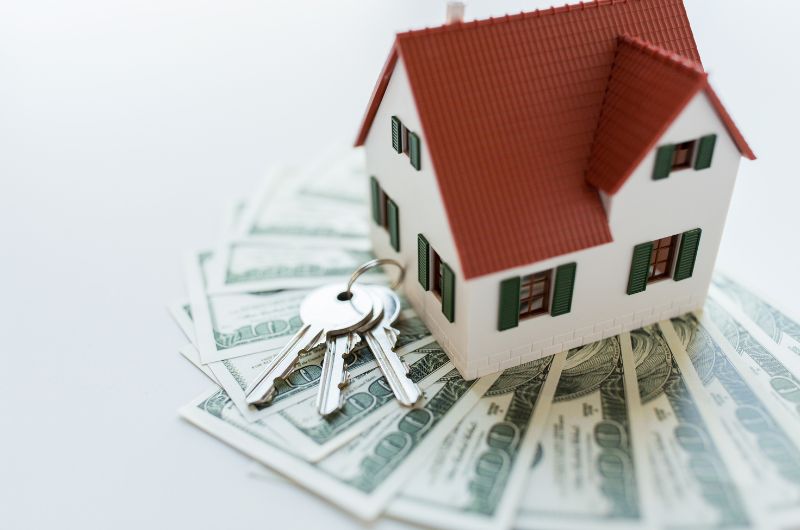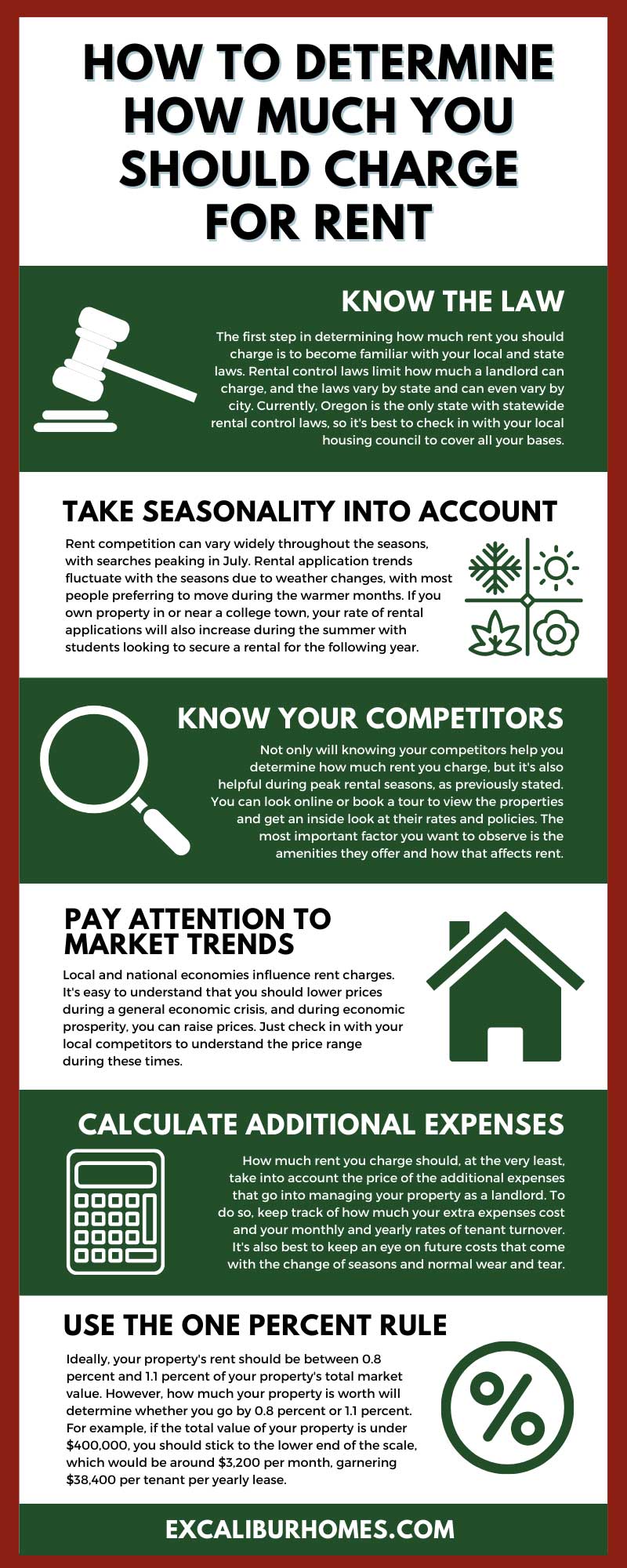
Determining the amount of rent to charge can be one of the most challenging parts of being a landlord. You need to consider the economy, seasons, amenities, and much more. Not only that, but the profit you make as a landlord is, at least in part, a portion of your income, making the situation even more complex.
Ideally, you want to keep your tenant turnover low and your occupancy rate high to make a profit. However, how much rent you charge can drastically change how many tenants you have and the type of tenants you bring in. If you’re not a numbers type of person or struggling to establish how much your tenants should pay, here’s how to determine how much you should charge for rent.
Know the Law
The first step in determining how much rent you should charge is to become familiar with your local and state laws. Rental control laws limit how much a landlord can charge, and the laws vary by state and can even vary by city. Currently, Oregon is the only state with statewide rental control laws, so it’s best to check in with your local housing council to cover all your bases.
The laws in place usually prevent landlords from accidentally or purposefully overcharging by limiting how much a landlord can charge per unit and how much they can increase rent per year. Typically, rent control is more common in areas where competition is high and tenant income is low to moderate.
Take Seasonality Into Account
Rent competition can vary widely throughout the seasons, with searches peaking in July. Rental application trends fluctuate with the seasons due to weather changes, with most people preferring to move during the warmer months. If you own property in or near a college town, your rate of rental applications will also increase during the summer with students looking to secure a rental for the following year. However, these seasonality changes depend on the area, so it’s best to observe the trends before making general assumptions.
To compete with how the market will change, you can increase your rent charge during peak periods in your area when demand is high and lower your charge when demand and supply are low. However, because of this, you should be ready to contend with your local competitors.
Know Your Competitors
Not only will knowing your competitors help you determine how much rent you charge, but it’s also helpful during peak rental seasons, as previously stated. You can look online or book a tour to view the properties and get an inside look at their rates and policies. The most important factor you want to observe is the amenities they offer and how that affects rent.
For example, if the number of amenities offered per unit is higher than yours, consider lowering the rent charge to be more in line or better than your competitor. The same goes for the opposite. You can feel free to charge more if you have more or recently upgraded amenities.
Other factors you should observe when looking into your competitors are outside or shared areas, recent remodeling dates, unit size, as well as proximity to transportation, activities, and other daily necessities like grocery stores and hospitals. Not only will these factors determine how much your competitor charges, but they should also affect how much you charge.
Pay Attention to Market Trends
Local and national economies influence rent charges. It’s easy to understand that you should lower prices during a general economic crisis, and during economic prosperity, you can raise prices. Just check in with your local competitors to understand the price range during these times.
However, if there is a drop in demand, like during the COVID-19 pandemic, you’ll want to lower your rates accordingly. Not only were people not moving due to the economic crisis, but they were declining jobs, staying close to loved ones, and postponing events that would usually lead to high migration rates like marriages and honeymoons. However, the people that did move moved to the suburbs to get away from highly populated cities.
Therefore, it is critical to pay attention to trends and reasoning for increases and decreases in demand. The market can change almost instantaneously, so adjust your rent charge accordingly.
Calculate Additional Expenses
How much rent you charge should, at the very least, take into account the price of the additional expenses that go into managing your property as a landlord. To do so, keep track of how much your extra expenses cost and your monthly and yearly rates of tenant turnover. It’s also best to keep an eye on future costs that come with the change of seasons and normal wear and tear. For example, the energy bills may rise in the summer due to an increased usage of temperature control systems like air conditioning units or personal fans.
If you’re struggling to know what expenses to consider, keep in mind taxes, future repair needs, landscaping, employee pay, property damage, and the cost of vacancy.
Use the One Percent Rule
Ideally, your property’s rent should be between 0.8 percent and 1.1 percent of your property’s total market value. However, how much your property is worth will determine whether you go by 0.8 percent or 1.1 percent. For example, if the total value of your property is under $400,000, you should stick to the lower end of the scale, which would be around $3,200 per month, garnering $38,400 per tenant per yearly lease.
If the total value of your property is above $400,000, then you should stick to the higher end of the scale–1.1 percent. This brings rent to around $4,000 to $5,000 a month, garnering $66,000 per tenant, per yearly lease.
However, this is by no means the only factor you should go by, as the average American cannot afford to pay $5,000 a month in rent. You also need to pay attention to the type of tenants you want to attract, the average income of tenants in the area, and other factors listed in this article.
Other Factors To Consider
There are a few lesser-known factors to consider when determining how much rent to charge. If your property provides a parking lot or garage, you can charge an extra fee, especially if you provide designated parking spots. In addition, tenants will pay more if your property offers a sense of security. This can be in the form of security guards, alarm systems, or combination locks.
Similarly, the surrounding neighborhood also plays a prominent role, especially with single-family units. Families with children typically rent single-family units and pay more to live in a secure community near schools, hospitals, grocery stores, and family-friendly activities. Ultimately, you should consider what makes your property stand out from the others when determining how much to charge for rent.
Now that you know how to determine how much you should charge for rent, you can confidently set the price of your properties. If you’re still unsure where to start and own property in Georgia, seek out experienced property managers in Marietta who are here to help make your life as a landlord a little easier.


